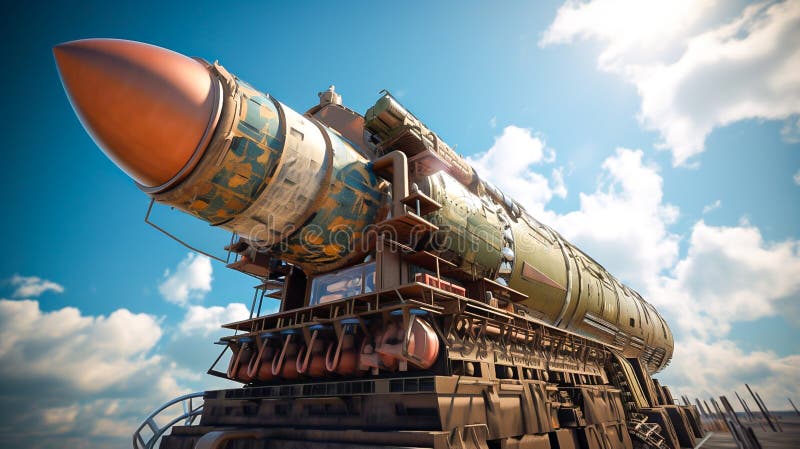Inside a nuclear warhead lies a paradox: an embodiment of human ingenuity juxtaposed against the specter of annihilation. The nuclear weapon, an artifact of technological prowess, serves not merely as a harbinger of mass destruction but as a profound narrative of our scientific and ethical landscape. This exposition delves into the intricate workings of nuclear warheads, illuminating their multifaceted significance while examining the daunting moral labyrinth they present.
The architecture of a nuclear warhead is not solely a rudimentary assembly of components; it is a meticulously orchestrated symphony of physics and engineering. At the heart of this apparatus lies the core: fissile material typically composed of uranium-235 or plutonium-239. These isotopes serve as the nuclear fuel that, upon reaching critical mass through a series of ingenious compressive mechanisms, initiate a chain reaction, unleashing an incomprehensible amount of energy. The reaction itself—a dazzling yet horrifying display of atomic interactions—transforms matter into energy as described by the equation E=mc², illustrating that a minuscule amount of mass can yield a catastrophic release of energy.
Accompanying the core are an array of precision instruments, including neutron initiators and tamper reflectors, all designed to optimize the efficiency of the explosion. These elements are sophisticated enough to evoke comparisons to a conductor directing an orchestra. The synchronization of reactions must occur flawlessly to create a detonation that exceeds several kilotons of TNT equivalent. This precision underscores the calculated balance between destruction and control—a duality that pervades the existence of nuclear arms.
However, the allure of nuclear warheads extends beyond their technical brilliance. They serve as instruments of geopolitical strategy; the mere possession of such armaments can alter the equilibrium of power among nations. This strategic dimension, often referred to as deterrence theory, posits that the potential for retaliatory destruction prevents nations from engaging in nuclear conflict. It is a chilling reflection of human history—where fear, rather than honor, dictates the conduct of states. The Cold War era epitomized this dynamic; nations raced to stockpile arsenals, their relationships marred by an unspoken acknowledgment of mutual obliteration.
Moreover, beyond their physical attributes and strategic uses, nuclear warheads incite profound philosophical discourse concerning ethics and morality. The existential ramifications of their deployment compel humanity to grapple with a fundamental question: What is the value of a security guaranteed by the threat of total annihilation? This conundrum summons the specter of utilitarianism, urging a consideration of the greater good. The moral quandary lies in recognizing that while a nuclear arsenal may ostensibly provide safety and deterrence, it simultaneously perpetuates the risk of catastrophic humanitarian consequences.
This paradoxical nature is accentuated when examining the concept of ‘nuclear fatigue’—a psychological state where the persistence of existential threat fosters a desensitization to the potential horrors of nuclear warfare. Such fatigue can lead to complacency regarding disarmament efforts and the ethical implications of maintaining nuclear arsenals. Consequently, nations may find themselves ensnared in a cycle of distrust and escalation, wherein the very instruments designed for peace instead perpetuate a climate of perpetual anxiety. The importance of dialogue surrounding arms control and disarmament becomes ever more urgent in this context.
Additionally, advancements in technology give rise to previously unimaginable questions surrounding the future of nuclear arms. Artificial intelligence, for instance, intertwines with nuclear strategy in complex ways, leading to potential scenarios where automated systems may influence launch decisions. This intersection of AI and nuclear weapons pits human oversight against algorithmic decision-making, raising alarms about the reliability of systems free from human empathy. This evolution demands rigorous ethical scrutiny, as the potential for unintended escalations looms large.
Furthermore, nuclear warheads extend their influence into the realms of science and industry, prompting innovations that stretch well beyond military applications. The technologies developed in the quest for effective nuclear deterrents can propel advancements in nuclear medicine, energy production, and even space exploration. Nuclear fission, originally harnessed for destructive purposes, re-emerges as a potent tool for alleviating energy shortages and combating climate change. Thus, the legacy of nuclear weapons oscillates between devastation and constructive potential, compelling society to navigate the delicate balance between these dualities.
In reflecting upon the nuclear warhead, one must also acknowledge the evocative symbolism it carries. The warhead embodies the pinnacle of human achievement, showcasing the extraordinary capabilities of science and engineering. Yet, it simultaneously serves as a poignant reminder of our fragility; it confronts humanity with the visceral reality of its own mortality and the profound responsibilities that accompany such power. Engaging with the reality of nuclear weapons challenges us to ponder not just the future of warfare, but the essence of humanity itself.
In conclusion, examining the inner workings of a nuclear warhead reveals much more than an explosive mechanism. It is a testament to human ambition, fraught with moral complexities and geopolitical implications. As we traverse this intricate landscape, it is imperative to foster a dialogue that champions both disarmament and the responsible use of scientific endeavor. The path forward demands not only innovation but also an unwavering commitment to safeguarding the tenets of ethical responsibility and the profound value of human life.












